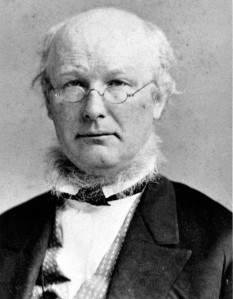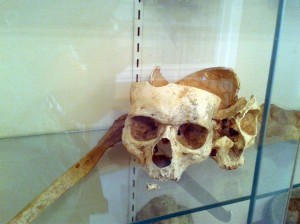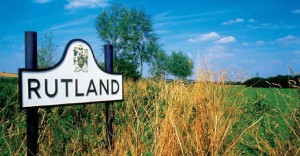“Boy” White died by “suffocation by strangulation.” William McPherson was “found dead at rear of Tyrell’s shop.”
Who were these people? And what’s the rest of their story?
What about Mary Jane Taylor? Continue reading
“Boy” White died by “suffocation by strangulation.” William McPherson was “found dead at rear of Tyrell’s shop.”
Who were these people? And what’s the rest of their story?
What about Mary Jane Taylor? Continue reading
Asa Smith, “the strange mystic of Clarendon,” had a vision of “chalybeate water impregnated with lime” that would lead him in 1776 to discover the springs in the western part of town that would cure his “scrofulous humor” (cancer).
Five years later, a business-savvy Mr. George Rounds, saw the potential of the area after another man, a Mr. Shaw, was also cured of cancer by anointing himself with the clay surrounding the springs. He built a simple log cabin and took in as boarders those who traveled in search of a cure and in doing so gained the distinction of opening the first spa in the state of Vermont. Continue reading
Barstow Memorial School in Chittenden is, according to many, one of the finest in the state. For a rural town buried in the hills of Green Mountain National Forest, this seems a little surprising. But the fact that this school is just one part of a legacy left by a family of philanthropists, headed by a man of whom it was said, “To know (him) was to admire him; to know him well was to love him,” may help explain why Chittenden is rich in offerings as well as beauty.
Continue readingSome Rutlanders today still remember the women who washed laundry. One remembers going with her grandfather to drop it off and pick it up. Someone else remembered their large vegetable garden, another the candied apples they’d hand out at Halloween. Still others recall eating meals served by the women and singing Christmas Carols alongside them.
Believe it or not, these women they remember were inmates; Continue reading
Today, a Rutlander’s choice of church isn’t determined by their country of origin or native tongue. All churches now reflect the community in which they reside: a homogeneous melting pot of those who call themselves Americans. But not so long ago — the century spanning from approximately 1830 — this was not the case. Continue reading
POLICE REPORT…
Rutland (1905) — George Chaffee, a successful Rutland business man, has been fined for going 10 mph on Center Street!
Chaffee, who constructed the Playhouse — the Paramount Theater— in 1913, and who built and lived in the exquisite structure we now know as the Chaffee Art Center on South Main Street, was one of the first automobile owners in town. And he was also a speed-demon. Well, well.
“One eugenical scheme to purify the state’s polluted protoplasm was bring in a better class of Vermonters — tourists and summer homeowners.”
What is one of the first things you notice when you cross the border back into Vermont? No billboards, right? What about the other features we take for granted: tourist information booths, great hiking trails, summer homes — many, many summer homes — cabins, cottages and even a few mansions. Yes, our tourist industry is one of the major things that keeps Vermont on the map. We have a brand that, thanks in part to various movie references across the decades, is known even internationally. And we are proud of it.
But what if I told you this tourist industry had racist and socially discriminatory roots? That even the construction of Route 7 and the improvement of other highways starting in the 1930s were to make our state more attractive and accessible to the “right” people”? Continue reading
 Did you know there could have been a third president with a claim to Vermont?
Did you know there could have been a third president with a claim to Vermont?
In 1872, one Horace Greeley, formerly of West Haven and East Poultney, a Liberal Republican candidate endorsed by the Democrats, ran against Ulysses Grant, whom he had formerly supported. Ridiculed by Republicans and attacked in the political cartoons of Thomas Nast in Harper’s Weekly as an extremist and turncoat — he campaigned to pull the Federal troops out of the South arguing the war and slavery were over and that the people should now essentially govern themselves — he only received 43 percent of the popular vote.
Shortly after this defeat, his wife Mary died. Thirty days later, before the electoral vote was cast, Greeley also died, leaving him with the unfortunate distinction of being the only presidential candidate to ever die during the election process.
But this is hardly a fair claim to fame. Continue reading

It may have been because I was expecting (hoping?) to feel something when I entered the basement of the Old Chapel on Seminary Street on the campus of Castleton State College — my stomach flipped. A strange sensation of, not fear, but what? Unease. A slight pressure inside.
While it may not be its original cellar hole — the building had been moved from its original site on Main Street and, as such, is hardly a representation of its former self — the air, it felt, well … just different.
Apparently I’m not the only person who has felt something unusual.
Continue reading As a writer, I am particularly interested in the power of words and language. My graduate research into the transformative abilities of writing looked into the affect words have on us psychologically.
As a writer, I am particularly interested in the power of words and language. My graduate research into the transformative abilities of writing looked into the affect words have on us psychologically.
One of the most amazing findings was that of Dr. Masaru Emoto whose research with water changed the way I thought about words and our bodies. He taped various words, such as “love,” “gratitude,” “kill,” and “anger” on different beakers of water. He then photographed the water crystals from each beaker. The results were mind-blowing. Continue reading